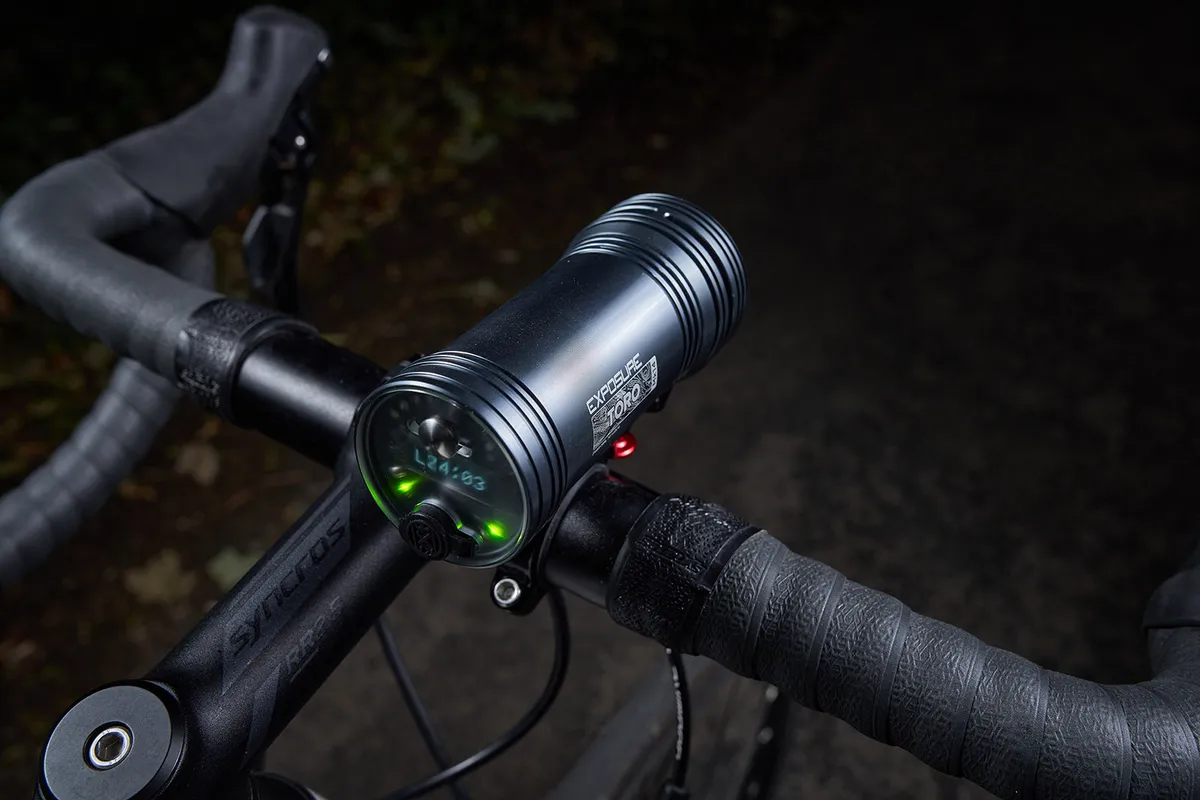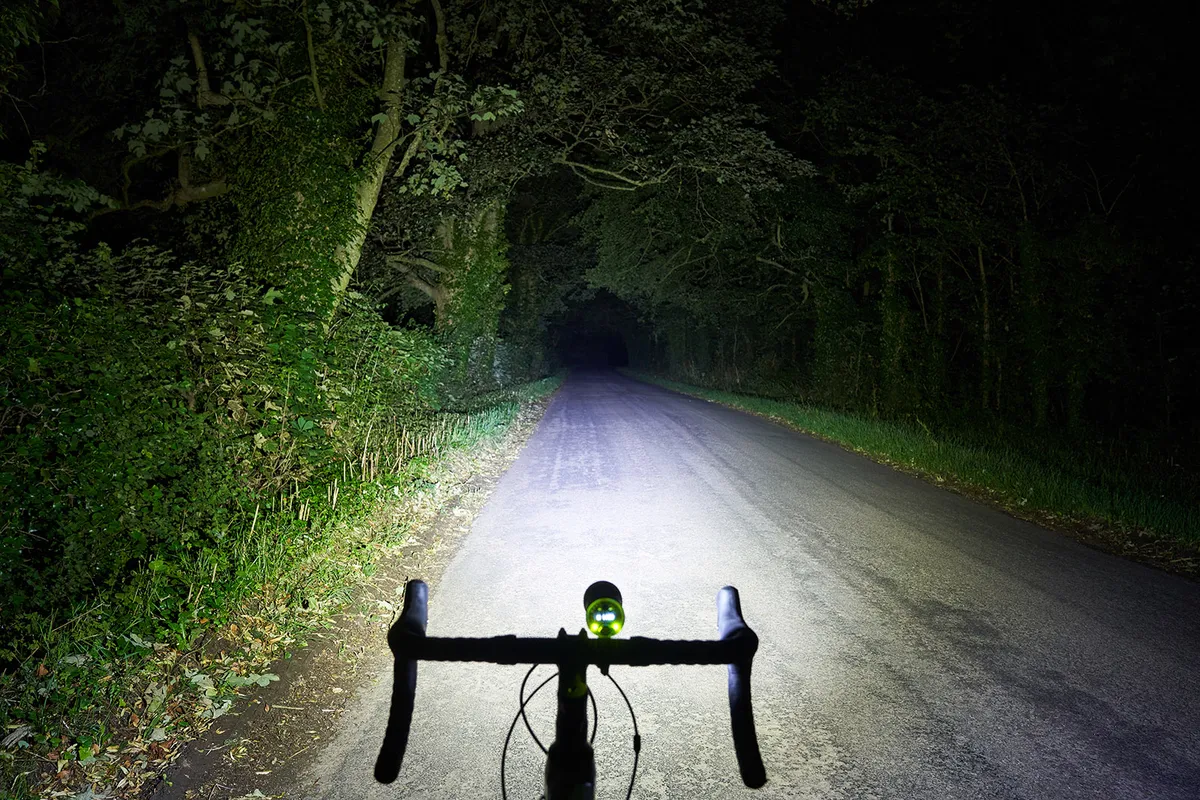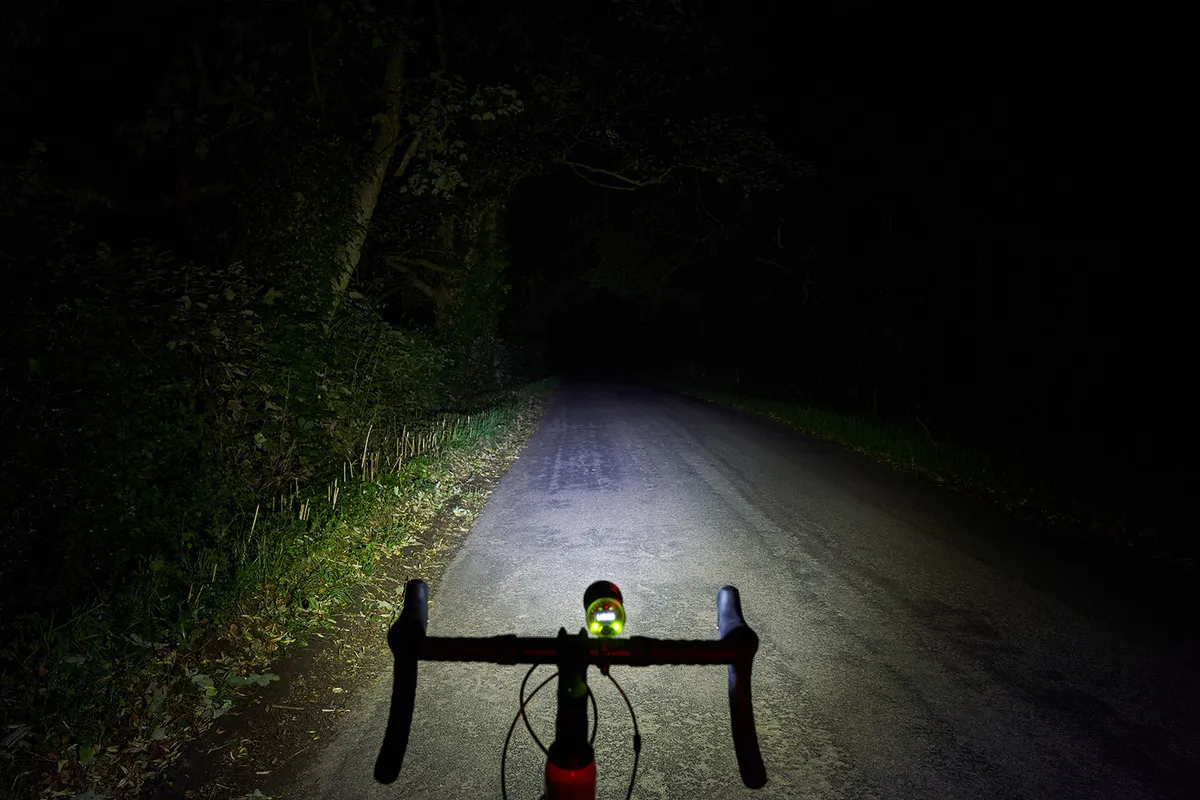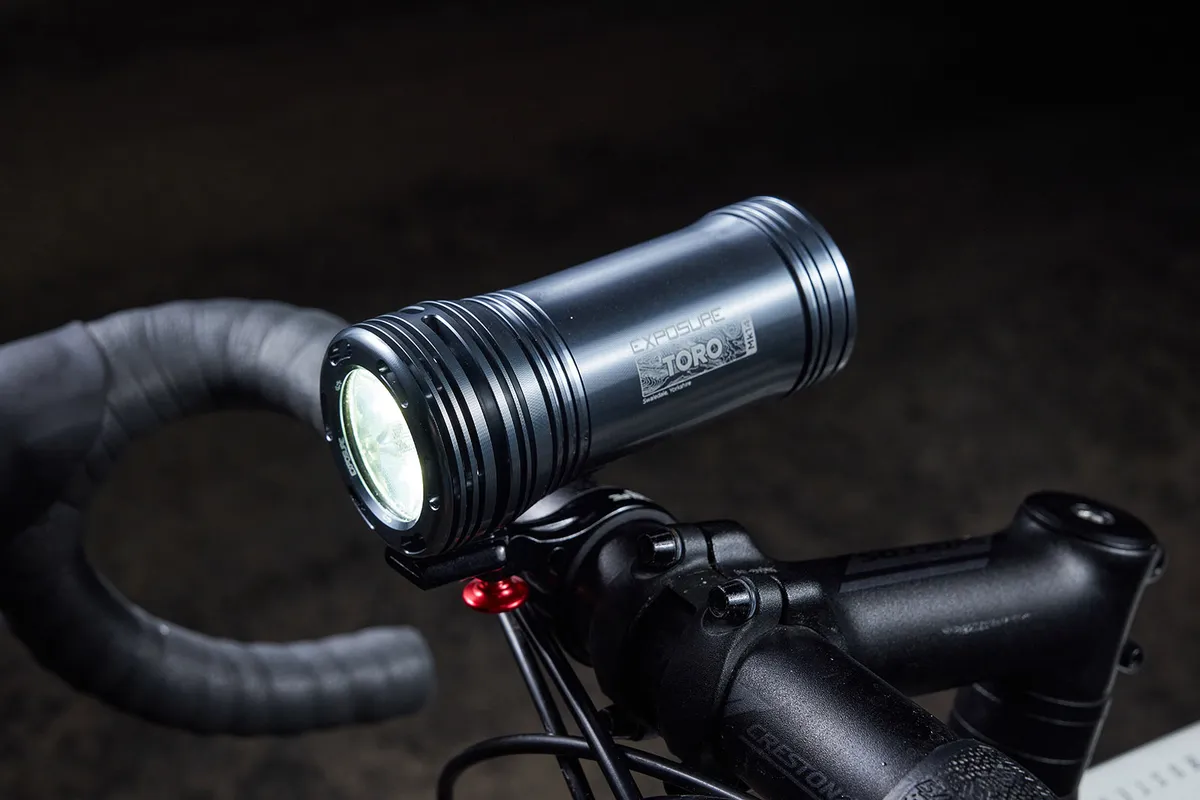Exposure’s beautifully made lights have been a feature of the UK riding scene for years and over that time the brand has added an impressive array of functionality and outright performance to its lights.
The Exposure Toro Mk14 attests to the continuing evolution of Exposure’s light tech with its 14 suffix and the sheer amount of tech and illumination on offer.
If you don’t mind getting to grip with the large number of modes, it’s a very impressive light.
Exposure Toro Mk14 specifications and details

The Exposure Toro is an impressive light judging by all of its statistics.
Not only will it push out up to 3,600 lumens for two hours, it also has a heap of clever functionality built in. That list is led by Exposure’s Reflex+ function, which increases brightness when riding faster and dims it when you slow down.
The Toro is beautifully CNC machined, with an etched grey body, and deep cooling fins and front-facing slot vents around the three LEDs. These are necessary features to help dissipate the considerable heat generated when running at full gas.
As with many bike lights, there’s circuitry built in that dials down the brightness if the light’s temperature rises too high.
There’s a very large 10,200mAh battery on board, which contributes to the light’s substantial 276g heft. It takes six hours to recharge.
Exposure’s mount is beautifully crafted out of alloy.
It uses an Allen bolt to attach it to the bars, with the light clipping easily into a tapering retainer and held in place by a red anodised sprung alloy pin.
It is quite fiddly to mount, because it comes in two parts, with the bottom half of the mount sliding into the top part, which I found slightly awkward on a bike with aero-profile bars.
Exposure Toro Mk14 performance

Mount the Exposure Toro above your bars and it sits quite high up, which is good for forward illumination.
The huge amount of light on tap, paired with this, means you’ll get a good view of obstacles ahead, making the Toro a good option for off-road adventures, as well as dark back lanes.
The light level on the highest-output setting feels less than the headline figure suggests though, because there’s no strong spot focus on the road ahead.
Instead, there’s a flood of light that illuminates a wide patch, so you get a broad spread with plenty of peripheral illumination. In contrast, the low setting on the default program feels rather under-illuminated.
It’s fine to use as a dipped beam on city streets, but a bit inadequate otherwise.
As with other Exposure lights, there’s a translucent cover at the rear, behind which is an LED screen. This is easy to read and gives you runtime and mode information.
If you decide to mount the light below your bars, the Toro will sense this and the display will be flipped.
As a default, the light has high-beam and low-beam setups, which you can toggle between using the on/off button.
Two LEDs at the rear of the light also shine either red or green. Initially, these indicate which mode you are in, but after a couple of seconds switch to show battery status.
Hold the single button down for a couple of seconds and flashing mode is activated.

Despite the deep fins on the light’s body, with such high output it does get hot. Fortunately, the Reflex+ tech dials down the output automatically once you stop, which helps regulate heat a little.
Although effective, the deep, closely spaced cooling fins on Exposure’s lights collect dirt easily and need a regular scrub to keep them looking nice. This probably also helps to keep the cooling effective.
Rather than using a USB adaptor for charging, Exposure has its own proprietary round charging cable. For the Toro, this comes permanently attached to a mains charger.
This means if you want to travel with your light, you’re also going to have to travel with the fairly bulky mains charger. Fortunately, Exposure supplies a robust semi-rigid zipped case with the light, which helps, but it remains large and bulky to carry.
The bung on the charge port is also a little tricky to push into place, and I needed to push hard and twist it back and forth to get it to seat fully.
The light comes pre-configured with high, low and flashing modes, with Reflex+ activated for the high mode.
If you don’t like these, you can choose one of the other nine programs, which offer a range of illumination levels, with or without Reflex+, and in some cases an intermediate constant-output mode.
It’s worth noting that, although Reflex+ is handy off-road, if you’re riding on the road at night, you may suddenly give oncoming vehicles a 3,600-lumen blast, so Exposure recommends choosing a programme without this activated for such situations.
Handily, Exposure has etched the different programs, their modes and runtimes on the underside of the light, although you’ll need good eyesight to read it if you decide to change things as it starts to get dark.
There’s a bit of a learning curve involved in operating Exposure’s lights. Once you get used to how long and how many times you need to press the function button, the Toro is fairly easy to operate, but it’s not hugely intuitive.
An app to configure the light might be useful to smooth this process, but the sheer number of options here can sometimes be overwhelming.
Exposure Toro Mk14 bottom line

Beautifully made, packed with tech and with a very high output, the Exposure Toro is an impressive piece of kit.
Although you can just turn it on and use it, to get the best out of your considerable investment there’s quite a lot of underlying functionality to get your head around and remember how to use when riding. It’s very expensive too.
How we tested | front lights
Front bike lights are essential accessories if you intend to ride at night, in dark and gloomy conditions or simply want to be seen more easily on your regular rides.
For our 2023 testing, we selected the pick of the latest higher-lumen output models, designed for road and gravel riding, to see how they fared.
Big lumens aren’t the be all and end all, though. Our testing included using the lights in varying modes, in diverse weather and light conditions, while assessing the beam shape on the road (and gravel path).
We also checked burn times and highlighted notable plus or minus points when it comes to usability and installation.
Lights on test
Product
| Brand | Exposure |
| Price | A$618.00, £355.00, $408.00 |
| Weight | 276g |
Features
| Light type | front |
| Integrated battery | yes |
| Features | Run time (full beam): 2 hours IP rating: IP64 Battery capacity: 10,200mAh Modes: 3 as delivered, ten different programmes available |
| Output (lumens) | 3600 |
